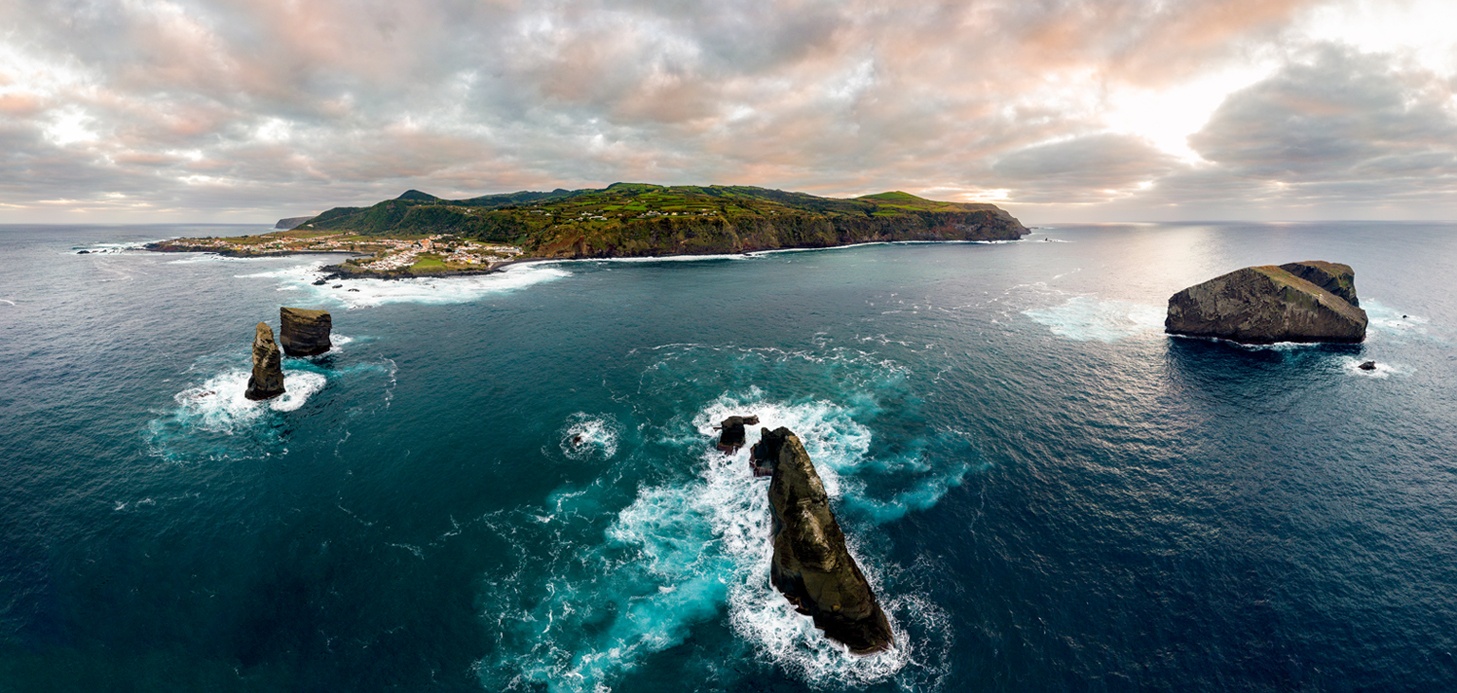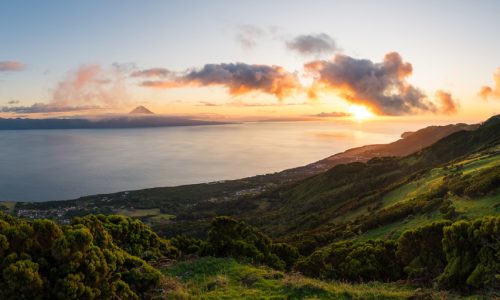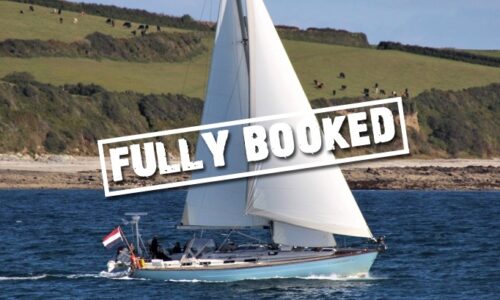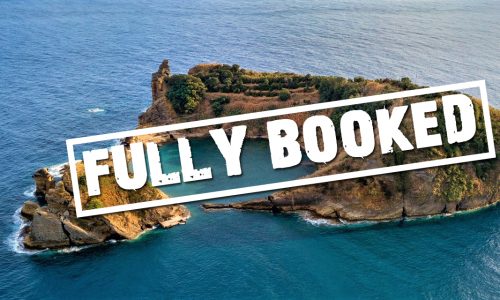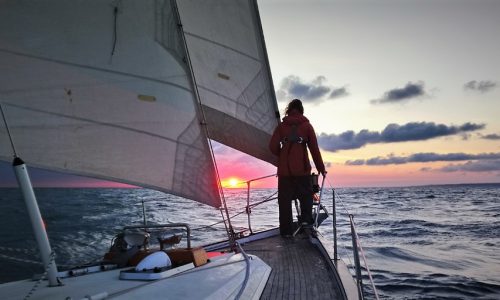Sailing holidays Azores | Offshore Yacht Charter
The Azores are a stunning archipelago in the middle of the Atlantic Ocean, 850 miles west of Lisbon. A sailing holiday around the Azores offers all the ingredients for a fantastic sailing trip:
– A perfect temperature between 22 and 28 degrees Celcius.
– Crystal clear water with a long slow ocean swell.
– A very high chance of seeing whales and dolphins.
– Varied landscapes from impressive volcanic ridges to subtropical forests.
– No mass tourism, the Azores are an ideal holiday destination for those seeking tranquility and beautiful nature.
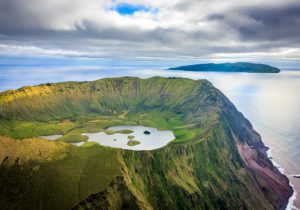
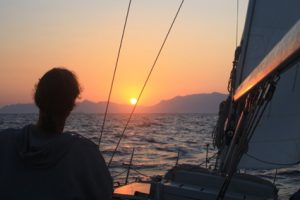

Island hopping around the Azores
The Azores consist of three groups of nine large islands. Summer is the best season to visit this spectacular archipelago. If you would like to visit several islands, a sailing holiday is the ideal, most beautiful and nicest way. The special feature of this way of traveling is of course the sailing itself. Purely on wind we sail from one place to another. Every day you will be in a new port and you go to places where you otherwise would not go easily. Moreover, your accommodation travels along automatically, nice and easy.
The Western Islands (Corvo and Flores) and Eastern Islands (São Miguel and Santa Maria) lie a day sailing away from the central group. Iff we go there, we will have to sail overnight (category A sailing trips). The Azores central group consists of the islands of Faial, Pico, São Jorge, Graciosa and Terceira, which can be reached within a normal day of sailing.

Individual / solo holidays in the Azores
Nature in the Azores is overwhelmingly beautiful and very diverse due to its volcanic origin. Most of the islands still have craters and crater lakes, some are grass green, but others are also azure blue with thermal baths. On the islands of the Azores are several stunning viewpoints, called Miradouros, with views over the islands and the ocean. Along the coast are impressive lava cliffs, some with natural baths and black lava beaches.
The Azores also have dense forests, colorful vegetation and botanical gardens. During sailing there is a good chance that we will encounter dolphins and even whales. The dolphins love to come and swim in front of the bow which is truly an unforgettable experience.
Our sailing holidays are especially suitable for couples and individuals / solo travelers, because you can sign on alone, to join a group where more singles have booked, and we do not charge a single surcharge.
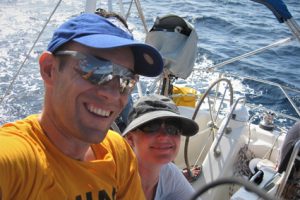
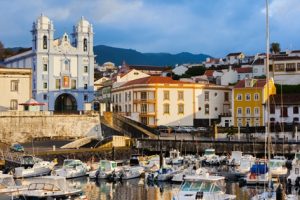
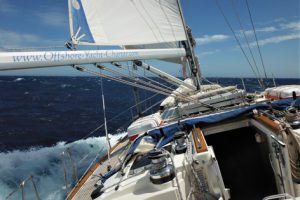
Sailing holidays with skipper around the Azores
The Azores are ideal to explore by sailing yacht, because of the many islands. Besides Corvo, all the islands have a harbor. Some islands / harbors lie further apart, but fortunately the Cherokee is fast and comfortable due to its length, making it possible to sail in day trips around the central island group.
Each sailing holiday has its own category, the C-category sailing voyages have either relatively short day distances, or we stay in the harbor for a day to make a tour or a long walk. You can decide decide yourself what to do that day. Going out on your own, with the group or just reading a book, everything is possible. The group consists of a maximum of eight passengers and two crew members.
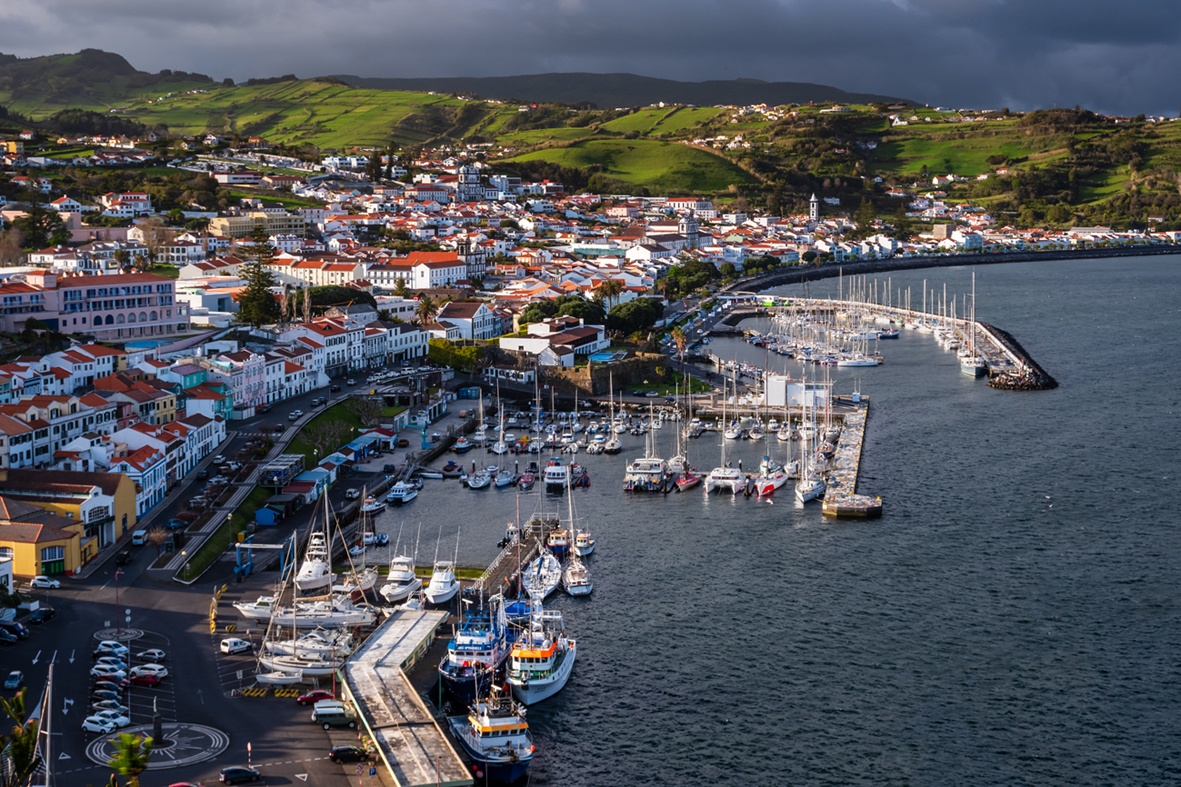
Sailing along around the Azores
Sailing holidays around the Azores are a nice balance between travelling, culture and relaxation. You do not have to have sailing experience to sail with us. We will regularly have to carry out a sailing maneuver. The sailing enthusiast can help us, but nothing is mandatory, after all it is your holiday, you can simply enjoy and relax.
You will join a group of like-minded people; people who love to be on the water and explore nature. Sailing together quickly provides a group feeling and a nice atmosphere. We sleep and eat on the boat and the last evening we all go out for dinner.
Weather in the Azores
The best time to travel to the Azores is from June to August. With a pleasant temperature of between 23° C and 28° C, and little rainfall. The water temperature will then be approximately between 20° C and 22° C.
The islands are generally warmer and sunnier on the south sides than the northern parts and the humidity is also a bit higher there, so there is more greenery. The islands in the east are the warmest and the islands in the west have lower temperatures due to the stronger winds.
The mountains in the Azores are often shrouded in mist, which makes the coast more pleasant. Stormy depressions in winter sometimes cause extremely bad weather with large amounts of rain.
The weather situation in Europe is often determined by the so-called Azores High. A subtropical high pressure area around the Azores as the name already suggests. The Azores high is created by the exchange of heat between the North Pole and the equator and usually ensures stable weather.
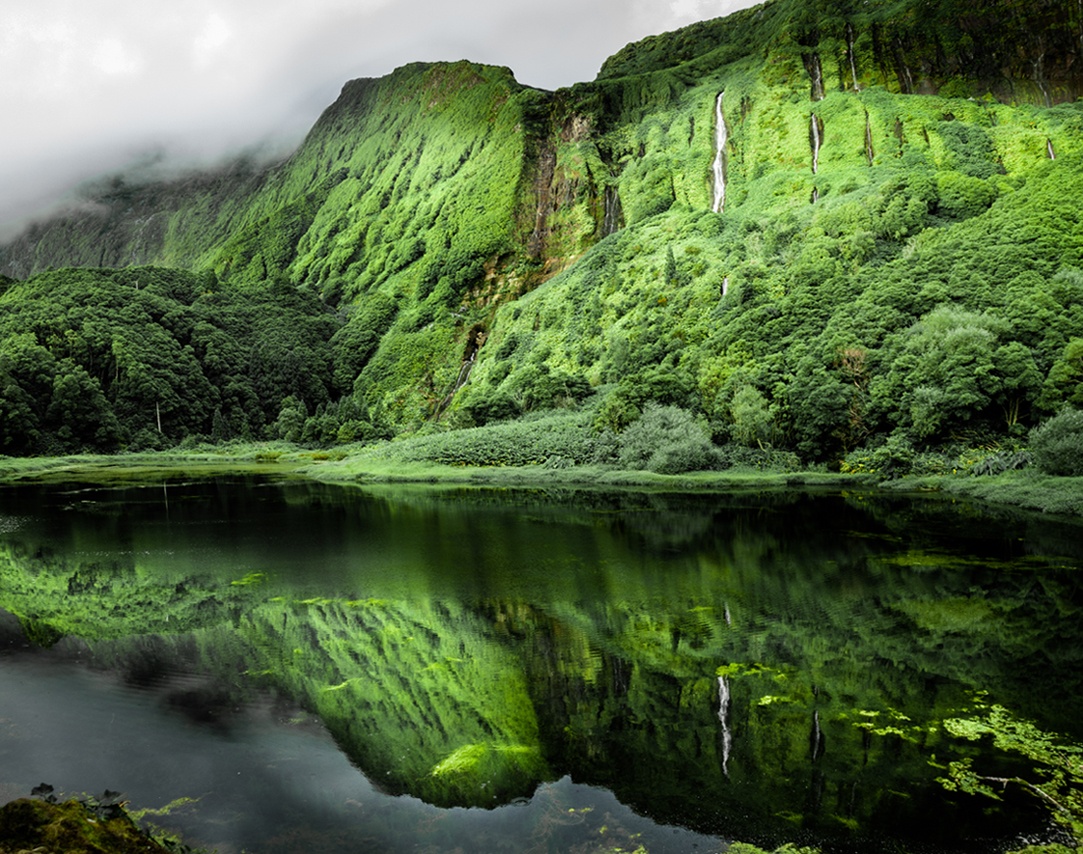
Brief nautical history of the Azores
Until the 15th century, the Azores were an unspoilt area with no original inhabitants. The Azores got their name from a hawk (Acor), unfortunately the first islander was mistaken about the bird. It turned out to be a buzzard, but the name has remained and the flag of the Azores also simply depicts a hawk. The Azores were lying very strategically on the way to the ‘new world’ for Portugal and was therefore very important for the country. They mainly lived from livestock, agriculture and fishing. A lot of grain has been cultivated and the Island São Miguel has the only tea plantation of Europe.
From 1580 to 1640, the Azores, like the rest of Portugal, were occupied by Spain. During that period, the surrounding waters were the scene of many naval battles between Spanish and English naval fleets.
For five centuries, until about 1970, the Portuguese used sailing ships to fish for cod off Greenland and Newfoundland. From Lisbon, the schooners, known as the ‘white fleet’, first sailed to the Azores to replenish the crew there. Five months in cold and harsh conditions. From the mother ship the fishermen went down in Dory’s, 5 meter long boats, to catch as many fish as possible on their own with long lines. Sometimes they disappeared into the fog or caught so much fish that the dory became unstable. After a day of sometimes 13 hours, the fish had to be cleaned and salted in the evening.
There are many whales around the Azores. Only in 1986 the whaling in the Azores was officially banned. On Pico is museum with beautiful boats that were used for whaling. Today, the Azores are one of the largest whale sanctuaries in the world.
